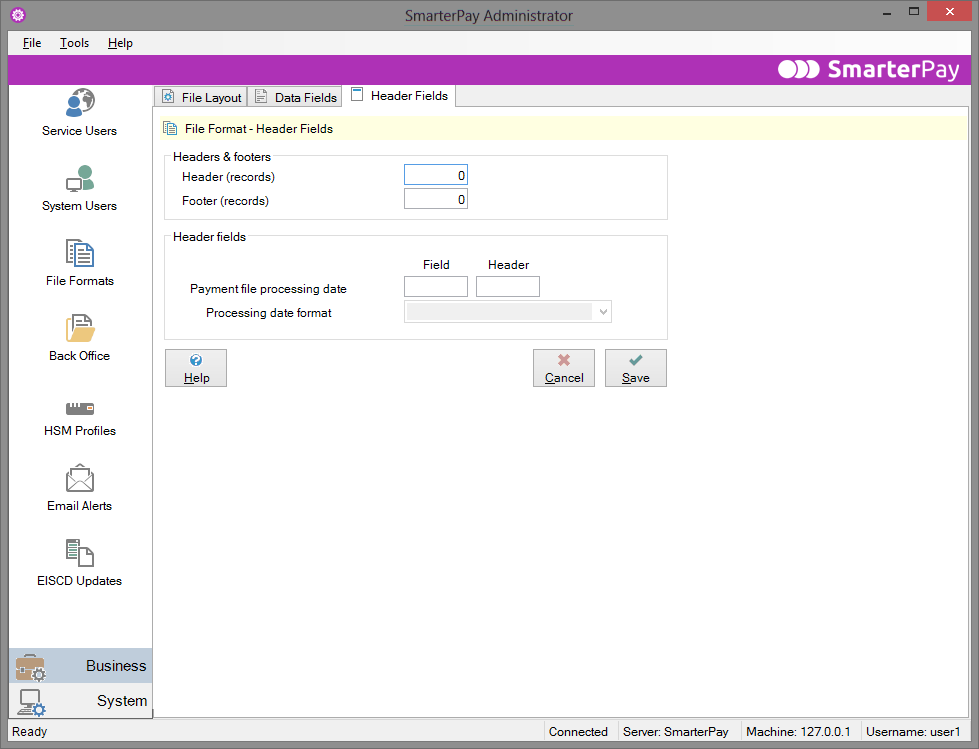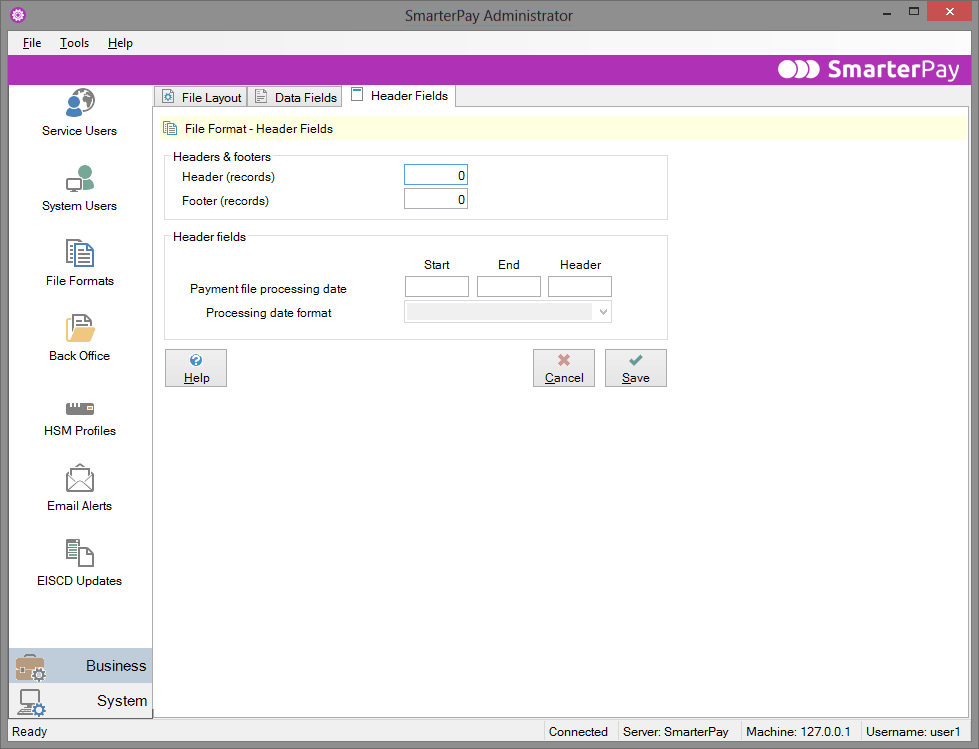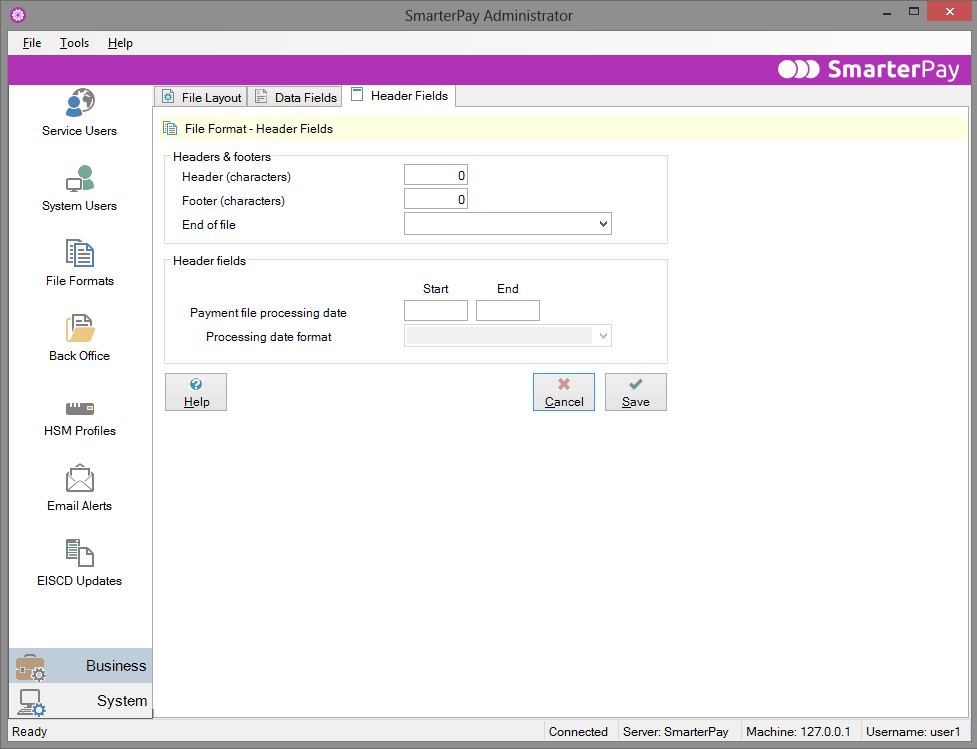Glossary of Terms
Additional contact
A service user can have as many additional contacts as needed. However, there is no requirement to have any at all. Additional contacts are set up by Primary Security Contacts. An additional contact is granted privileges to carry out certain functions on behalf of a service user. Some privileges are only available to primary security contacts.
Arrival
In relation to the processing cycle, arrival is the first stage where a submission is transmitted to (arrives at) BACS for processing (arrival, input, processing, entry).
ARUCS
Stands for Automated Return of Unapplied Credits Service. The service allowing banks/building societies to return to the originator any credit payment instructions they could not apply. The credit is returned to the originating account. BACS generates a report for the originator detailing the credit being returned and the reason for the return.
ARUDD
Stands for Automated Return of Unapplied Direct Debits. The service allowing banks/building societies to return to the originator any Direct Debit payment instructions they could not apply. The debit is returned to the originator's account. BACS generates a report for the originator detailing the Direct Debit that is being returned unpaid and the reason for the return.
Bacstel-IP
A service providing a highly secure access channel into Bacs. It uses internet technology and public key infrastructure (PKI) security to allow access to Bacs payment services including payment file processing, report accessing etc. Bacstel-IP carries out some online validation of submissions.
Bureau
A type of service user. Submits payment files to BACS on behalf of a number of other service users. A bureau is a type of direct submitter but a bureau cannot originate payment instructions. There are different types of bureau:
Commercial – submits payment files on behalf of third parties and must be certified as a BACS approved bureau.
In house – submits payment files on behalf of other service users that are all part of the same company or group of companies as the bureau
Other – any bureaux that do not fit into the other two categories e.g. a sponsor service operated by another organisation on the sponsor's behalf.
Bureau service user number
A number allocated to a bureau to uniquely identify it to BACS. A bureau service user number starts with a B followed by 5 digits.
Contact
Contacts are the people who act on behalf of service users. Contacts are registered on Bacstel-IP and are given privileges allowing them to carry out functions for service users.
There are two types of service user contacts: Primary Security Contacts and Additional Contacts.
CSV
Comma Separated Value. This is a file which contains data values separated by a comma and can be imported into common applications such as Microsoft Excel.
Delimited records
Headers and Footers
The Headers and Footers section allows you to specify how many header records and footer records are contained in this file format. You must specify these values if your file format contains header and footer records, so that the software knows where to find the actual data records.
Header Fields
The Header Fields section allows you to specify the position of the Payment File processing date, if this field is held in the Header section of this file format. If your file format does not contain a Payment File Processing Date, the software will automatically provide a Payment File Processing Date for you, which will be the next valid BACS processing date.
In the Field field, type the index number of the field position within the Header record.
In the Header field, type the index number of the Header record.
For example, if the Payment File Processing Date is held in the fourth field of the second header record, you would type 4 in the Field field, and 2 in the Header field.
Payment Date Format
The Payment Date Format field allows you to select the format of the date using the dropdown list. There is no default, so you must choose a format if you have indicated that the Payment File Processing Date is held in the Header section of the payment file. Several common date formats have been provided in the dropdown list, but you may type in your own format if necessary, subject to the following limitations:
Year must be defined as yyyy or yy (upper or lower case)
Month must be defined as mm (upper or lower case)
Day must be defined as dd (upper or lower case)
No singular d, y or m is allowed
Month and day names are not allowed
Delimited records with fixed length fields
Headers and Footers
The Headers and Footers section allows you to specify how many header records and footer records are contained in this file format. You must specify these values if your file format contains header and footer records, so that the software knows where to find the actual data records.
Header Fields
The Header Fields section allows you to specify the start and end positions of the Payment File Processing Date, if this field is held in the Header section of this file format. If your file format does not contain a Payment File Processing Date, the software will automatically provide a Payment File Processing Date for you, which will be the next valid BACS processing date.
In the Start field, type the start position of the Payment File Processing Date within the Header record.
In the End field, type the end position of the Payment File Processing Date within the Header record.
In the Header field, type the index number of the Header record.
For example, if the Payment File Processing Date is held in characters 20 - 27 of the second header record, you would type 20 in the Start field, 27 in the End field and 2 in the Header field.
Payment Date Format
The Payment Date Format field allows you to select the format of the date using the dropdown list. There is no default, so you must choose a format if you have indicated that the Payment File Processing Date is held in the Header section of the payment file. Several common date formats have been provided in the dropdown list, but you may type in your own format if necessary, subject to the following limitations:
Year must be defined as yyyy or yy (upper or lower case)
Month must be defined as mm (upper or lower case)
Day must be defined as dd (upper or lower case)
No singular d, y or m is allowed
Month and day names are not allowed
Digital certificate
Assigned by a trusted certificate authority, a digital certificate is the form in which PKI credentials (public and private keys) are issued. Certificates are held on your smart card.
Digital signature
The result of a calculation performed on a file/message using the signer's private key. The signature is attached to the file or message before it is sent. If the receiver can decrypt the message with the signer's public key, they can be sure of the identity of the sender and they can determine if the contents of the file or message have been altered after it was signed.
Earliest processing date
When a submission contains payment files with different processing dates, the processing date of the submission is deemed to be the earliest processing date of all the payment files within the submission.
Editing a service user bank account
Highlight one of the entries in the list of bank accounts and click the Edit button to edit an existing bank account. This will bring up the Account Details dialog, showing the details for the selected service user. The fields and their contents are the same as when adding a service user bank account. For details of the contents required, please refer to the section entitled Adding an originating bank account.
Entry
In relation to the processing cycle, this is the last stage where the payment instruction is applied to (enters) the destination account (arrival, input, processing, entry).
Fixed length records
Headers and Footers
The Headers and Footers section allows you to specify the length of the header records and footer records that are contained in this file format (i.e. the number of characters that make up each record). You must specify these values if your file format contains header and footer records, so that the software knows where to find the actual data records.
End of File
Use this field if your fixed length records make use of an end-of-data marker. Either select the appropriate marker from the dropdown list, or type in the control character or string that is used for the end-of-data marker. This character will indicate to the software that the data stream has ended if, for example, you have a file format that puts this control character at the end of the data then pads out the rest of the file with zeroes until a multiple of the record length is reached.
Header Fields
The Header Fields section allows you to specify the start and end positions of the Payment File Processing Date, if this field is held in the Header section of this file format. If your file format does not contain a Payment File Processing Date, the software will automatically provide a Payment File Processing Date for you, which will be the next valid BACS processing date.
In the Start field, type the start position of the Payment File Processing Date within the Header record.
In the End field, type the end position of the Payment File Processing Date within the Header record.
For example, if the Payment File Processing Date is held in characters 20 - 27 of the second header record, you would type 20 in the Start field and 27 in the End field.
Payment Date Format
The Payment Date Format field allows you to select the format of the date using the dropdown list. There is no default, so you must choose a format if you have indicated that the Payment File Processing Date is held in the Header section of the payment file. Several common date formats have been provided in the dropdown list, but you may type in your own format if necessary, subject to the following limitations:
Year must be defined as yyyy or yy (upper or lower case)
Month must be defined as mm (upper or lower case)
Day must be defined as dd (upper or lower case)
No singular d, y or m is allowed
Month and day names are not allowed
Input
In relation to the processing cycle, this is the last stage where payment instructions are input into the BACS validation system (arrival, input, processing, entry).
Input report
A Bacs generated report produced following the successful validation of a day section of a payment file. Any payment instructions that have been amended, rejected or returned by Bacs are highlighted on the report.
Multi-file submission
A submission that contains more than one payment file. Multi-file submissions can only be submitted by a bureau.
Multi-processing day file
Also known as an mpd file. A payment file that contains payment instructions that are to be processed on different days. All payment instructions with the same processing date are grouped into day sections.
Originator
A service user who originates payment instructions, whose bank/building society account details make up the originating account information in a payment instruction, and who is responsible for those payment instructions. An originator can be either a direct or an indirect submitter.
Payment file
A set of payment instructions in the correct format to be submitted for processing by BACS. A payment file can contain several day sections and account sections.
Payment instruction
A data record that effects the movement of money from one account to another or that sets up a Direct Debit at a destination bank/building society. A payment instruction can be either a debit, a credit or a Direct Debit Instruction (not including any signed authority).
PKI credentials
PKI stands for public key infrastructure. PKI credentials is the collective term for the public and private keys issued to an individual in the form of a digital certificate. PKI credentials are used for authentication and encryption.
Primary security contacts
Also known as PSCs. Each service user must have at least two primary security contacts, which have been set up by your bank. These can be given the privilege to set up and maintain additional contacts to act on behalf of that service user. (PSCs can only be set up by the service user's bank). PSCs can also be allowed to maintain certain service user reference data. Other privileges available to PSCs are the same as those granted to additional contacts. A PSC must have a smart card, enabling him to access the BACS website.
Private key
A cryptographic key used in public key infrastructure systems, used for signing and decrypting messages. A private key is associated with a specific public key.
Processing
In relation to the processing cycle, this is the stage where the payment instruction is processed by the bank/building society (arrival, input, processing, entry).
Processing cycle
The minimum time taken for a payment instruction to be submitted to BACS for processing and the time it reaches the destination account. The processing cycle has four stages: arrival, input, processing and entry.
Public key
A cryptographic key used in public key infrastructure systems, used for encrypting messages and verifying signatures. A public key is associated with a specific private key.
Public key infrastructure
Also known as PKI. A system to verify the validity of parties involved in electronic communications and to secure electronic data transmissions. PKI involves digital certificates, certificate authorities and other registration authorities. PKI security is used by Bacstel-IP. PKI uses two “keys”: a public and a private key. A message encrypted with a private key can only be decrypted with the associated public key (and vice versa).
Service user
A company, group of companies, charity etc that is sponsored to use one or more Bacs services.
Service user number
A number allocated to a service user to uniquely identify it to Bacs. A service user number is 6 digits long.
Signing Solution
This consists of a smart card reader and signing software. This may be supplied to you by SmarterPay Ltd or by your bank. You will have to install the signing software on a client machine before you can associate any system users with smart cards in the Administrator.
Single file submission
A submission that contains only one payment file. Single file submissions can be submitted by all direct submitters.
Single processing day file
Also known as an spd file. A payment file that contains payment instructions that are all to be processed on the same date (the date specified in the submission).
Smart card
A plastic card with an embedded microchip that is used to store a contact's digital certificate (public and private keys). The digital certificate is used to authenticate the holder and digitally sign data.
Sponsor
Any financial institution that can authorise service users to use Bacs. Also referred to as sponsoring bank.
SSL
SSL (Secure Socket Layer) is the most common form of Internet security and is used in particular for HTTPS transactions over the Internet.
Standard 18
The standard that defines the required format for files and records input to BACS and the format of files and records output by BACS to the banks/building societies.
Submission
A payment file or files transmitted to Bacs for processing.
Three-day cycle
The service offered by Bacs where the minimum time taken for the processing cycle is three processing days. Input, processing and entry occur on consecutive processing days.


